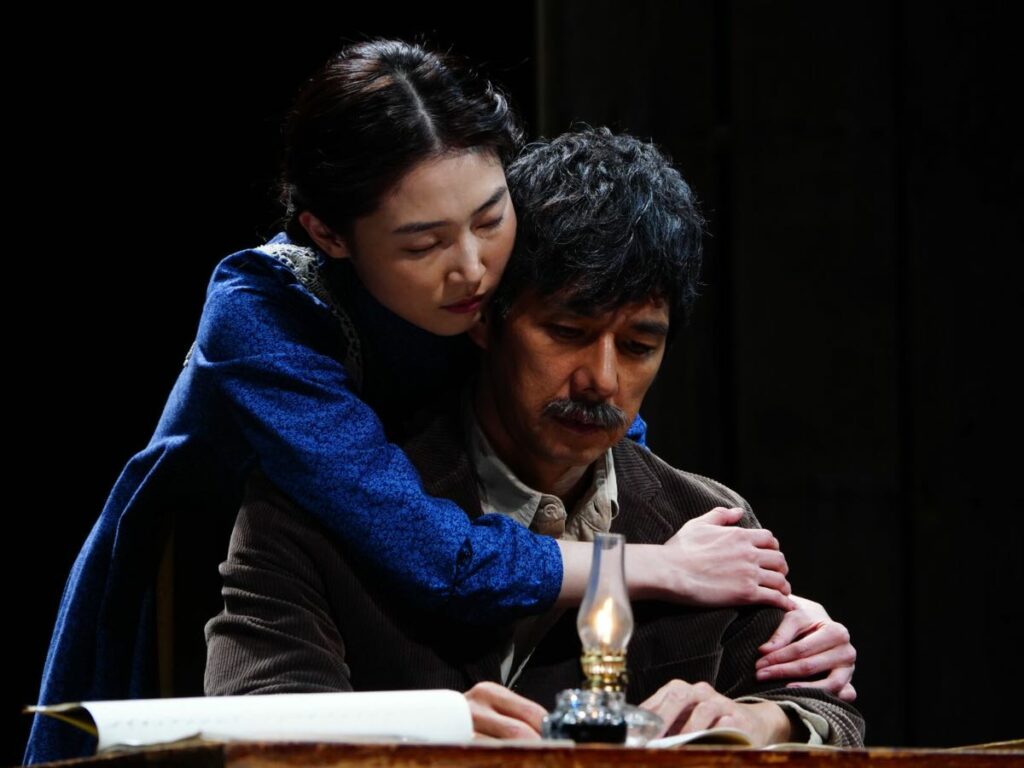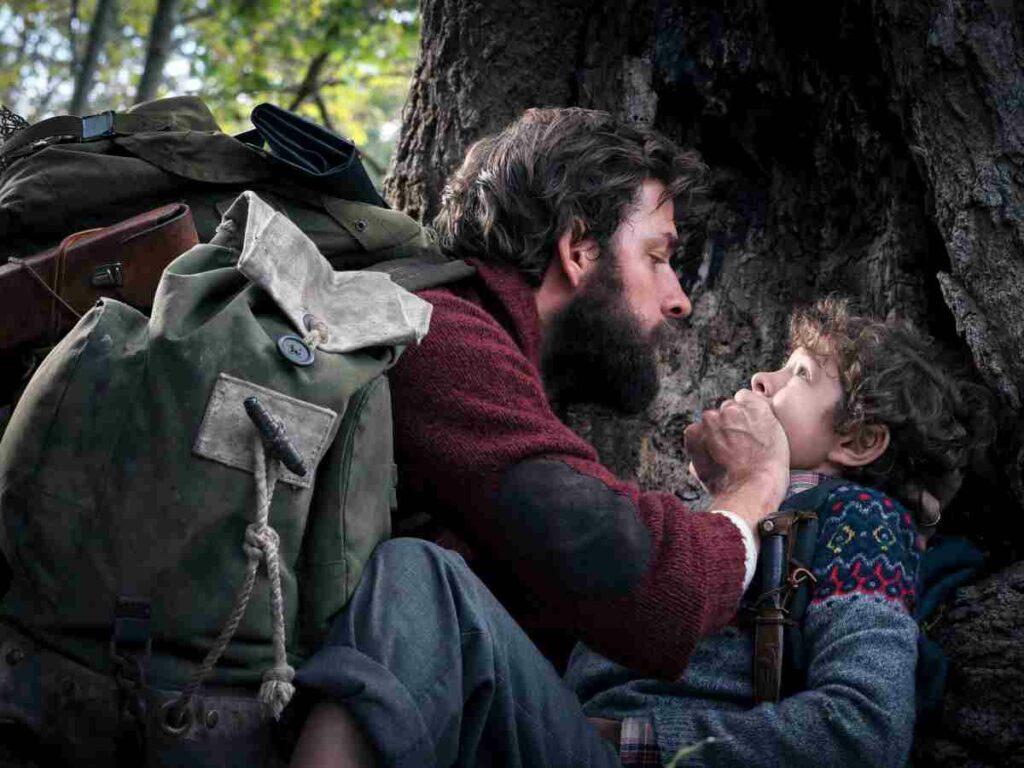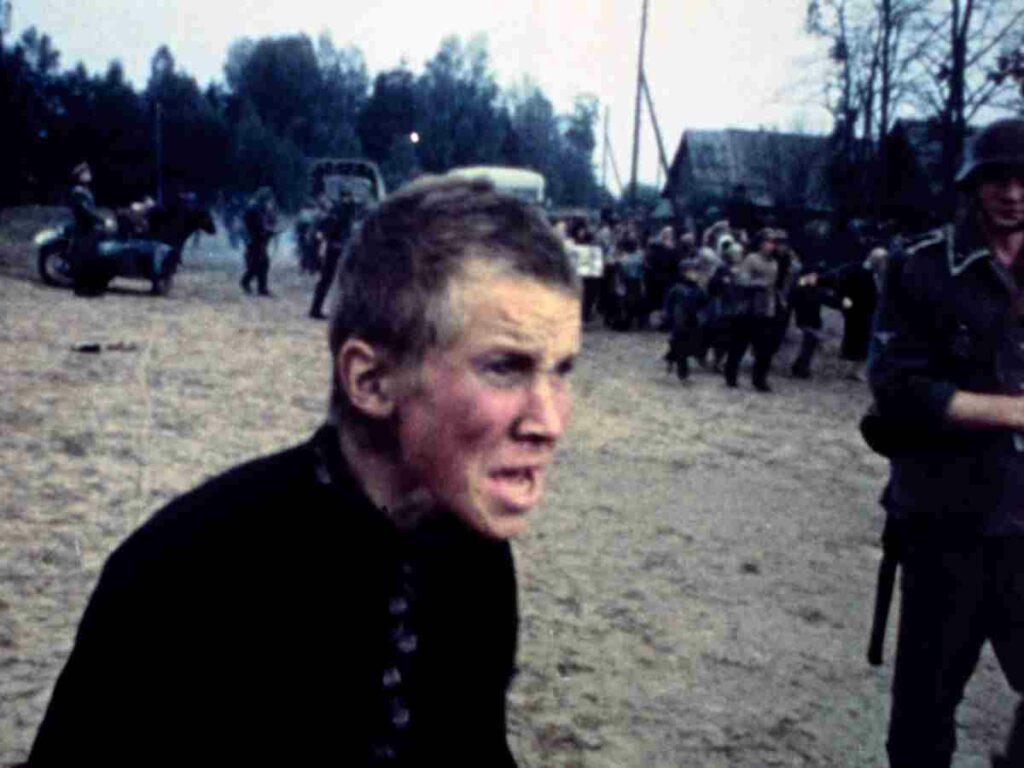Haruki Murakami’s stories have fascinated readers for decades now. His works have been translated from Japanese into more than 50 languages. Most of his works are based on magic realism. This could be one of the major reasons for them not being adapted to films. Tony Takitani (2004), Norwegian Wood (2010), and Burning (2018) are among the works that have been adapted. Tony Takitani and Burning are based on short stories, while Norwegian Wood is adapted from a novel. Recently, well-known Japanese director Ryûsuke Hamaguchi adapted Murakami’s Drive My Car, a short story from his collection titled Men Without Women (2014).
Drive My Car bagged the Best Screenplay Award (Ryûsuke Hamaguchi and Takamasa Oe) and the FIPRESCI (International Federation of Film Critics) Award at Cannes last year. This film appears to have piqued the interest of the international film audience. It continues to win accolades, taking home four awards, including Best Picture and Best Director, at the Boston Society of Film Critics’ 42nd annual meeting. The CFCA (Chicago Film Critics Association Awards) named it the Best Foreign Language Film of 2021. It scooped up Oscar nominations in four categories this year — Best Picture, Best International Film, Best Director, Best Adapted Screenplay. Hamaguchi’s recent films, including Asako I and II (2018) and Wheel of Fortune and Fantasy (2021) too have received international praise. Wheel of Fortune and Fantasy won the Silver Bear Grand Jury Award at the 71st Berlinale.
Hamaguchi was aware of the potential difficulties that may arise when he was asked to adapt a Murakami story. In an interview he said, “Basically when we talk about Haruki Murakami’s novels or short stories, they take place somewhere in the intermediary area between reality and fantasy…So, in terms of the film, this calls not only for potential budgetary issues but in terms of depicting the story, it could actually potentially be very difficult”. He finally selected Drive My Car. This was one of Murakami’s stories that did not have supernatural elements. It is a narrative about sorrow and how the protagonists are able to cope with it and move forward.
Adapting Books For Screen
Hamaguchi believes that Murakami’s stories possess a universal aspect that would make a film based on them extremely relatable to global audiences. The story of Drive My Car is about forty pages long, which makes it a difficult proposition to turn it into a full-length feature film. Naturally, eyebrows may be raised when it is revealed that Hamaguchi’s adaptation is 2 hours 59 minutes long. There may be a sense of familiarity for the audiences who have already read Murakami’s work, it may seem that this film contains elements from other Murakami tales. They wouldn’t be wrong in thinking so.
While it’s true that Hamaguchi’s Drive My Car is broadly based on the short story of the same name, it is also true that he has incorporated some story elements from two other short stories from Men Without Women, namely Scheherazade and Kino. Using all three stories, the director has been able to create a film that is true to the spirit of Murakami’s fiction. Uncle Vanya, one of Anton Chekov’s plays, is mentioned in the story of Drive My Car. In the film, the play enjoys a much more significant part.
The first 40 minutes of the film deals with the story of the Kafuku couple, Yusuke (Hidetoshi Nishijima), the husband and Oto (Reika Kirishima), the wife. Yusuke is a well-known stage actor and director, whereas Oto is a renowned screenwriter who usually writes for television shows. Oto‘s profession has been changed by the director from that of a ‘leading lady’ to that of a screenwriter. Yusuke often assists his wife in writing her stories.
Love And Coping
The opening shot of Drive My Car is dark. On the bed, one can see Oto‘s silhouette sitting upright. In the background, the still asleep city of Tokyo, just as dawn is beginning to break. Oto typically comes up with story ideas immediately after the couple makes love. She is narrating a scenario about a young girl who will most likely figure in her upcoming plot. Yusuke gives her his feedback, resulting in the gradual progression of the new story. This girl in Oto’s new story has a habit of entering the homes of people when they are away. It is an obsession, or maybe a fetish.
She is attracted to a young man named Yamaga, whose house she wants to explore. She finds the key to his home eventually and begins a bizarre new journey of obsession. This part of the film is clearly inspired by Murakami’s short story, Scheherazade. Scheherazade‘s story manages to blend in seamlessly with the rest of the plot. Later in the film, the script brings it up once again to make a point that has a very Murakami-esque ring to it.
Oto and Yusuke are clearly in love. Both are sensitive to and respectful of the other’s emotions. They do, however, share a dark and tragic period in their lives, losing their daughter when she was only four. Oto apparently chose not to have another child, and Yusuke respected her wish. In the Murakami short story, this shared grief changes them to a certain extent. In Yusuke’s case, the change lasted for a short while. He began to fervently practice calligraphy, while Oto channeled her feelings into extramarital affairs.
On Infidelity and Unknowability
Murakami writes, “Thinking back, he realized that it was at that time that her love affairs began. Perhaps the loss of their child had reawakened her sexual desire. But that was pure conjecture on his part. Nothing more than another ‘perhaps.’”
Hamaguchi decided to keep this sense of uncertainty in his film. Yusuke never really finds out for sure the reason behind his wife’s sudden unfaithfulness. It seems that Oto is still in love with Yusuke, but she somehow cannot stop herself from having physical relationships with other men. In the film, Oto suddenly takes up writing stories after their child’s death. This wasn’t a plot point in Murakami’s Drive My Car. The story of the film intensifies the oddity of Oto’s infidelity by making her character write stories after she makes love. Drive My Car very successfully utilizes the story of Scheherazade to flesh out the relationship between Yusuke and Oto, as Murakami does not explore the character of Yusuke’s wife in minute details in his short story.
Yusuke loves his car, a bright red Saab 900 turbo, and he loves driving it to work every day. Oto recorded lines from their script of Uncle Vanya in her voice on cassettes. Yusuke plays them while he drives his car, in order to perfectly memorize his own lines for the character of Vanya. One day, Yusuke has a minor accident while driving. It turns out that he has glaucoma in his left eye, and it creates a ‘blind spot.’ It also may result in a loss of vision if not treated correctly. In the absence of worsening symptoms, he can drive. He continues to drive while taking his medication for the problem.
Storm Beneath The Calm
Yusuke can sense his wife’s unfaithfulness. While deeply hurt, he cannot bring himself to confront her. He knows they both need each other in this relationship. They were able to overcome the loss of their child by supporting each other. Yusuke chooses to look the other way. He buries his feelings deep within in an attempt to preserve the delicate equilibrium they’ve managed to achieve following their shared tragedy. Reika Kirishima and Hidetoshi Nishijima are brilliant as Oto and Yusuke, respectively. Kirishima has a disconcerting, haunting expression, like something inside her is irrevocably broken since her daughter died. Nishijima ably embodies a man enduring intense internal anguish while trying to project an image of calmness.
One day, he receives undeniable proof of his wife’s infidelity. He discovers Oto in bed with her co-worker, Takatsuki. This shatters whatever doubt he may have been harboring in his mind about Oto’s affairs. In the next scene, he practices his lines for Uncle Vanya, “I envy him a lot. Such good luck with women! Don Juan himself couldn’t have more experience.” Oto‘s final contribution to the story she was writing was that the protagonist believes she was a lamprey in her previous life. She’s safe and content in her undersea environment, feeding slowly on other fish. In this incarnation, she is doing the same thing: stalking Yamaga and preying on his existence. Oto also describes how somebody potentially discovers the protagonist of her story in Yamaga’s home.
Before Yusuke leaves home, Oto asks him to make some time, so they can discuss something. Once again, he attempts to avoid a confrontation. It had been his choice to look the other way all these years but now he can no longer do so. A storm was brewing on the horizon, threatening the stability he desired.
Finality of Life And Death
When Yusuke comes home from work, he finds Oto collapsed on the floor from a cerebral hemorrhage. She eventually dies. This leaves Yusuke in a precarious position. He will never understand now why she had physical relationships with other men, despite her love for Yusuke.
Moreover, in avoiding a confrontation, he destined himself to live with the knowledge that he might have saved her life; if only he’d listened to her and stayed on that day. She probably wanted to resolve their relationship problems together. He is seen later performing in his Uncle Vanya adaptation. When Vanya’s character is asked if Yelena is being faithful to Serebryakov, Vanya (played by Yusuke) is supposed to answer, “…that woman’s fidelity is a lie through and through.” He breaks down backstage after saying these lines.
The opening credits roll after 40 minutes into the film. The story of the film before that serves as an introduction to the life of the Kafuku couple and the difficulties they faced. It gives the audience a break, giving them time to think about the story they had just witnessed. After Oto’s demise, the tale she had started to weave remains unresolved for much of the film. Yusuke is invited to direct a multilingual production of Chekov’s Uncle Vanya at the ‘Hiroshima’s Arts and Culture Theatre.’ He accepts the invitation.
A chauffeur is assigned to him after he arrives in Hiroshima. He cannot drive while he is working in Hiroshima, this clause of his contract clearly cannot be changed. Misaki Watari (Tôko Miura) is to be his driver. Misaki is a young, skilled, no-nonsense driver. She talks only when necessary. She also knows her cars and most of the roads in the city (and more).
Persuasive Performances
Tôko Miura is a joy to watch as she presents a superbly poised and focused performance. The relationship between Kafuku and Watari blossoms into a special relationship later in the film.
The cast of the play is international to say the least – Mandarin, English, Tagalog, Japanese, and Korean Sign Language are all present in the production. Yusuke faces an unpleasant surprise when he finds out that his wife’s ex-lover, Koshi Takatsuki (Masaki Okada), is one of the actors who has applied to take part in the play. From here on, matters take a strange turn. Yusuke accepts his application but doesn’t give him the part which he had asked for. Instead of Astrov, he casts him as a much older Vanya. In the short story, Yusuke and Koshi‘s relationship was tricky. In the film too, it’s a strange friendship, but a lot more straightforward at the same time. Koshi, in the film, is a very temperamental individual and a womanizer. Yusuke does not waver to tell him the truth point-blank, when needed.
The rest of the cast in the film also perform admirably. Park Yu-rim’s performance as Lee Yoon-a really stands out. Lee Yoon-a plays the part of Sonya in Uncle Vanya. Even in this multilingual cast, her role is a bit different. She can’t speak, she communicates with Korean Sign Language using her husband’s (Jin Dae-yeon as Kon Yoon-su) interpretation, when required. Her performance as Sonya is superb. Her expressions, body language, and signals convey every emotion she intends to and probably even more.
Wrestling Inner Demons
Hamaguchi uses the rehearsal sessions of Uncle Vanya to develop the story further, different cast members like Takatsuki and Lee Yoon-a have their own share of personal problems. Matters they’re attempting to overcome. For Takatsuki, it is his inability to come to terms with Oto’s death. He is also wrestling with other inner demons – he is extremely impulsive and emotional. This eventually led to the downfall of his previous media career.
Yoon-a is attempting to reclaim regular life following a profound sadness brought on by her miscarriage. She was once a skilled dancer, but is unable to resume dancing because of the tragedy she’s had to endure. She’s living with her husband away from her home in Busan. However, she does not consider her inability to communicate verbally a barrier to assimilating into a foreign culture, she is a strong woman. She devotes herself entirely to preparing her role for Sonya. It’s her way of coping.
Misaki drives Yusuke everywhere. At first, she’s just an observer. She listens to Oto’s recorded voice when Yusuke plays the cassette to memorize his lines, Misaki observes how Yusuke reacts to it. He opens up to her bit by bit, telling her about his loss. Sensing his sincerity and inherent kindness, she opens up about her troubles. How she struggled to cope with her psychologically disturbed mother’s violent behavior. Her mother was a nightclub entertainer in Sapporo. She taught Misaki how to drive in the cruelest of manners imaginable, and for selfish reasons. Misaki’s hit by another tragedy when she loses her mother to a landslide.
Life hasn’t been easy, she works hard without expectations of happiness. Much like Sonya in Uncle Vanya. Yusuke and Misaki shared a common bond of grief and loss. Perhaps she is to Yusuke what Sonya was to Vanya. It is one of the plausible possibilities. Their relationship is Platonic, whichever way one looks at it.
Bonding In Guilt And Grief
The film picks up pace near the end. Takatsuki confesses to Yusuke how he fell in love with Oto. He feels a connection with him and probably feels that they both share the same grief. Yusuke is torn between jealousy and maybe something akin to compassion. In a lengthy scene in the car, Takatsuki talks with Yusuke. The director utilizes lingering close-up shots to amplify the emotional intensity of the scene. The camera switches between Yusuke and Takatsuki. Takatsuki tells Yusuke that his wife completed the story that she had started. She had told it to Takatsuki in their last encounter. It has a strange and unsettling finale, culminating in a murder.
Takatsuki in all earnestness tells Yusuke that maybe he shouldn’t try to unravel his wife’s strange behavior; and that she was a good person, whoever she was. Hamaguchi uses one of Murakami’s core ideas in this scene. Takatsuki tells Yusuke, “But even if you think you know someone well, even if you love that person deeply, you can’t completely look into that person’s heart. You’ll just feel hurt.”
Later, both Yusuke and Misaki reveal to each other how both suffer from a deep sense of guilt. A guilt borne of the fact that they might have saved the people they had lost only if they’d made different choices. They share a bond in many ways. They appear to be conscious of this reality. In fact, in a scene, they share a cigarette – their hands can be seen holding a lit cigarette through the convertible’s open roof. This beautiful shot is accompanied by Eiko Ishibashi’s music; rare as it is in the film (often in accompaniment to the scenes where there’s driving involved), her music creates a wonderful mood. It provides a break from the emotional intensity.
Cathartic Closure
Takatsuki’s life takes a turn for the worse when he’s taken into custody for an act of violence. Yusuke is shocked, and tells Misaki to take him to her hometown. They share a long drive together. Once there, both of them break down emotionally. They finally come to terms with their sense of grief. Misaki throws flowers at her destroyed home, in remembrance of her mother. In rare periods of psychological breakdown, her mother cherished and loved her daughter. She remembers that fact once she is back in front of her home, or what’s left of it. Toko Miura beautifully shifts from a professional mode of a driver to an emotional one of a woman who had suffered greatly in her youth.
Hidetoshi Nishijima does a brilliant job portraying Yusuke as he finally shows unshackled emotions. In a cathartic shot, he confesses that he was holding on to his guilt since he feels that he had failed to save his wife, “I should have been hurt properly.” Hamaguchi and Oe use this line from Murakami’s Kino very effectively to bring this emotional journey to a close.
Yusuke avoided playing Vanya after his wife passed away. As he himself had once said, “Chekhov is terrifying because his lines drag the real out of you.” His grief comes bubbling up to the surface once again when he must take on the role once again. It is a very moving scene. Nishijima as Vanya, and Yu-rim as Sonya play their parts beautifully on stage. Vanya confesses to Sonya, “I’m miserable.” Sonya conveys through sign language to him those famous lines, “What can we do? We must live our lives. Yes, we shall live, Uncle Vanya. We shall live through the long, long days, and through the long nights; we’ll patiently endure the trials that fate sends our way…we shall rest.” The curtain comes down on the stage to a thundering applause as the scene fades to black.
‘Blind Spots’
His ability to portray the inner struggles of his characters made Chekov a great artist. Throughout his oeuvre, he has explored the human mind, and the ways in which people are unable to avoid sorrow and frustration. Many of his characters are haunted by an inescapable grief. Whether it be Vanya, Ostrov, Sonya, or Yelena. Murakami’s fiction also deals with human suffering. Whether it is Norwegian Wood or Kino, he has an uncanny ability to delve into the innermost tragedies, losses, or heartbreaks of his protagonists and how they endeavor to cope with them. Hamaguchi takes advantage of this common theme to show how his main characters deal with their own inner conflicts.
Certain motifs recur throughout many of Murakami’s works. At times, some of them may appear to be repetitive. But Hamaguchi rightly concentrates on certain aspects of Murakami’s works which make them so insightful, as well as those that resonate with so many people all over the world. In Drive My Car, Hamaguchi skilfully investigates the ‘blind spots’ that Murakami mentions in his works. These blind spots are a part of everyone’s psyche. Despite how much we believe we know about another individual, we will never be able to fully comprehend him/her.
After watching the film for almost three hours, one perhaps cannot but feel a sense of wonder at how the director has managed to adapt the most interesting aspect of both Murakami and Chekov’s works – both had the capacity to progressively uncover people’s grief and misfortune, foregrounding them at the end of their tales. In their works both writers reveal the scars people try to hide, even from themselves.
Meditative And Richly Rewarding
Drive My Car is a magnificent piece of filmmaking. The cinematography is simple yet stunning. Hidetoshi Shinomiya utilizes two shots, close-ups, and extreme wide shots very efficiently. It has a simple yet captivating effect. Hamaguchi does not employ stylistic flourishes; his approach is very straightforward. He doesn’t even use flashbacks. He lets the audience feel the story unwind in front of them linearly and make their own decisions about the story. It unhurriedly unfurls the tragedy of the human condition before the viewer’s very eyes.
It is a lengthy film which is meditative in its approach, which may not be to everyone’s liking. But it is a greatly rewarding experience overall. It is a story about human perseverance. It shows its protagonists not giving in to despair in the face of extreme odds. This is going to strike a chord with viewers during these hard times of the pandemic. In an email mentioned in The New York Times, Murakami observes “I was drawn in from beginning to end… I think that this alone is a wonderful feat.” He also apparently loved the alterations Hamaguchi had made to his narrative.
In recent years, both Lee Chang-dong’s Burning and Ryûsuke Hamaguchi’s Drive My Car have demonstrated that though Murakami’s works may be quite difficult to adapt, they are not ‘unfilmable.’ In fact, they can be transformed into beautiful films that are highly regarded by both the public and the critics. This bodes well for the future of more such brilliant adaptations.
Where to Watch: HBOMax





This is one of the best articles on Drive My Car that I have come across in last two months. I learned a lot from Hiranmoy’s detailed analysis of the characters. Best wishes.